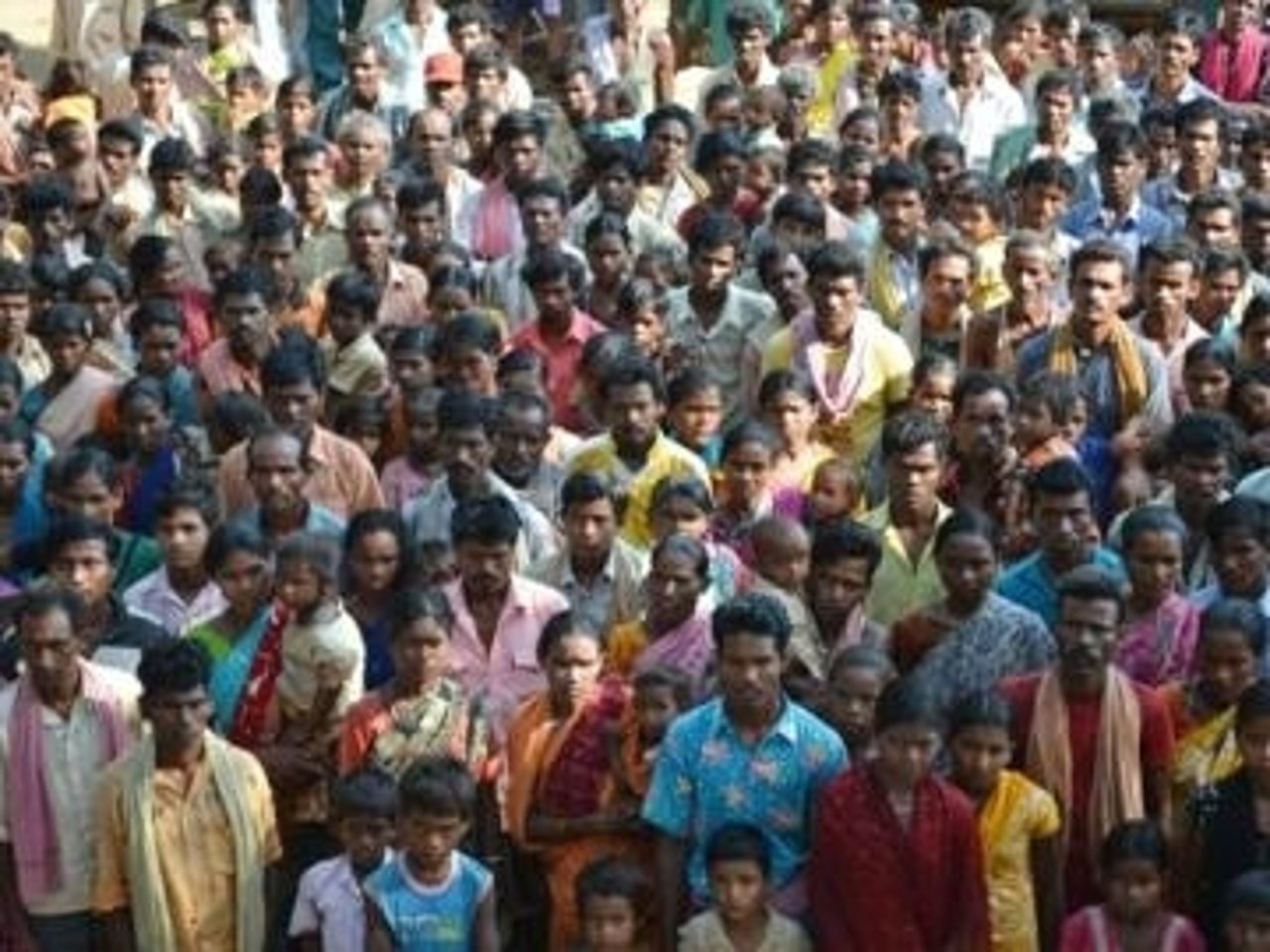More than 500 Free from Slavery in IJM’s Largest Operation Ever
Summary:

Jun. 24, 2011
CHENNAI – Today, 512 children, women and men are living in freedom after being rescued from a brick kiln in IJM's largest anti-slavery operation ever. Sparked by a brother's desperate plea, the operation brought freedom to nearly 400 forced to work in the kiln – including 23 children, the youngest only 8 years old – and their dependents, either too old and frail or too young and weak to work, but still held captive within the factory's walls.
A call for help, three states away
The whispered words of a forbidden phone call set in motion the force that would eventually topple the kiln's brutal slave system. Boola, 27, managed to contact his brother, who listened with increasing horror as Boola described 18-hour forced workdays without enough food or rest, refusals to provide promised payment – and vicious beatings by the owner and his henchmen.

Determined to save Boola, his brother made a report to the government, stating that he believed there could be many more trapped along with him in the massive brick factory. The government referred the case to IJM for support. Together, they prepared for a major operation – but no one imagined the magnitude of the crimes they would find.
'Who wants to come out?'
On the afternoon of Wednesday, April 27, 2011, a team of government officials and IJM staff, accompanied by police, entered the brick kiln, intent on liberating any labourers held there by force.
With a local government representative, Kandasamy, leading the way, the rescue team began to gather the surprised labourers from the brick ovens and huts into an open area. As the rescue team explained the reason they had come, excitement built among the labourers, who quickly began to call their loved ones to join the growing crowd.
It soon became apparent that the initial estimate of 200 people fell far short: A sea of people clad in tattered, but colorful, mud-flecked clothing stretched nearly 30 yards from where the team's rallying point had been established. The sight was overwhelming.

IJM Chennai Director of Aftercare Pranitha Timothy turned to the throng and shouted in Hindi, "Who wants to come out?" Immediately, hundreds of hands shot up into the air.
Accommodating the 500
The IJM team and Kandasamy and his staff began making preparations for the massive group desperate to leave. In a matter of hours, Kandasamy – an incredible advocate for the victims – had secured dinner, lodging and breakfast for all 512 people, a group comparable in size to that of a very large wedding.
He arranged for four trucks to transport the freed labourers to a nearby school, where they would stay for the next several days. When those trucks proved not enough, he used one that belonged to the brick kiln owner; already arrested, he was in no position to refuse. A medical camp was set up to administer check-ups and medication; a water tanker was brought in to provide clean drinking water; police provided 24-hour protection; and classrooms were cleared to accommodate the new arrivals.
Through the night until early the next morning, the freed labourers poured out their stories to local officials in order to be documented as released slaves. Through their recounting of cruel beatings, restricted movement and brutal labour, a common sentiment emerged: "Even if they pay us 10,000 rupees, we would not come back."
A certificate of freedom and a ticket home
As the operation stretched from one day to five, Kandasamy came up with more and more ways to benefit his 514 guests: by day two, a pair of television sets had been brought in to broadcast cricket and Oriya-language programs. At the same time, IJM staff supported the victims and assisted the government with preparation of the 371 official Release Certificates, which would be presented to each of the adults and children who had been working in bonded labour at the kiln, along with the initial installment of the government rehabilitation funds owed to them. While it often takes months for released labourers to see any of these funds, the money for these labourers had been withdrawn before they had even left the kiln.
By the operation's third day, a high-ranking government official arrived to hold a special ceremony to celebrate the labourers' freedom. He assured the labourers that the government would provide not only the required rehabilitation funds, but train transport and accompaniment home. The crowd erupted in cheers and applause; for the first time since they were enslaved, home was truly in sight.
"This is the most impressive display we have seen to date of the government being proactive in combating bonded labour and being sensitive to the needs of the victims," remarked Saju Mathew, IJM South Asia Regional Director. "It is a huge encouragement to work with talented, dedicated officials like these, who clearly demonstrate the potential of the government to lead the charge against bonded labour in India." For the next two days, Kandasamy stood on the platform of the local train station to send off the free children women and men in groups, watching as they boarded train cars that he had ordered to be attached on their behalf. IJM aftercare staff are making plans to ensure the families have the training they need to establish new lives in freedom. They have now returned home – more than 1000 miles from the place where they were enslaved – where they can live in safety.